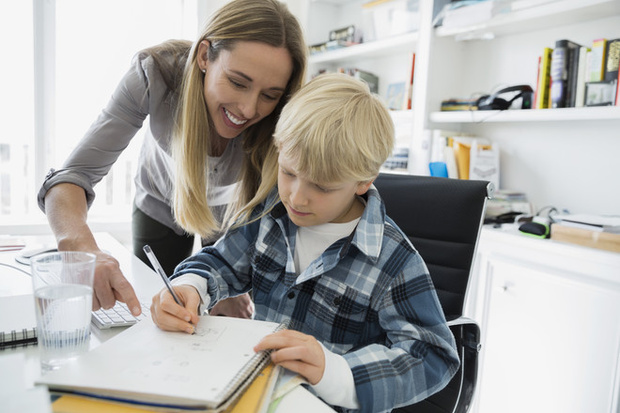Precise science has its beauty. But to appreciate it, this very science has to be understood. And it’s often not so easy.
Text: Natalia Eugenieva-28 February 2017
- I can’t do it anymore,” 10-year-old Sasha rolled her eyes painfully and dropped her head on her notebook.
The notebook was in a cage. Mathematics.
Yes, the queen of all sciences is often more difficult for children than literature, history or other humanitarian knowledge. But there’s nowhere without mathematics. So how do you deal with it?
The method was invented by British teacher Kathy Highham, who spent ten years of her life pushing the mathematical wisdom of others’ children. And when she faced the same problem, but already in her own family (Kathy has three children), she decided that something had to be changed. So she created Kathy’s Cool Room, a portal designed to help children and parents learn complex science.

And we’ve put together ten major pieces of advice that Mrs. Highham gives to her students and their parents. So, here they are.
- Talk to the teacher.
And more than once, when we met. Talk to your math teacher regularly. This way you can understand what’s hardest for your child. And you can provide, let’s say, targeted help.
Practice! How to get better at math?
To paraphrase Comrade Vladimir Ilyich, practice, practice and practice again. Especially if on the nose of GIA or EGE. Solve several times the problems from the collections, solve the examples from previous control or exams of previous years. This sounds trivial, but really helps. When the child realizes that he or she is solving all these once difficult tasks without a stutter, he or she will become more confident. And it is from a lack of confidence children often make mistakes.
- Little by little, but often.
Every real woman knows: regularity is the key to solving any problem, be it cosmetic procedures, diet or sports. It’s the same with math. Even 15 minutes, but every day will help your child to confidently touch math with even the most tricky calculations.
- Record and view
Let the child not just write down the answer, solving the problem, even if it’s the right one. It’s better if he writes down the whole solution process. Then, if he does make a mistake, you can see where the failure occurred. And fix the problem on the spot. And if the little genius decides everything in his mind, catching the moment when something went wrong will be much harder.
- Sync and corrected by honeybunny
Or at least praise. Small, even tiny prizes and praise will help your child feel that he really has achieved something. Mom’s admiration, for example – you will not believe it, but it is really important. A little bit of bragging or even self-love hasn’t stopped anyone yet. In the end, the installation in the child’s head “I can’t, I can’t do it” will change to another, more useful: “I can’t yet, but I can do it.
- Learn the multiplication table.
Trite? Well, yeah. Doesn’t mean it doesn’t work. The speed of thought, the speed of reaction can all be trained perfectly by just flipping examples from the multiplication table. And it doesn’t take much time. This game of “burning numbers” you can do while you spread the bed in the evening, wash the dishes, clean up toys – at least on a walk.

- How to get better at math?Repetition is the mother of teachings.
If a new topic is given too hard, perhaps the problem is that your schoolboy has not yet learned the previous one well enough. Go back a step or two, repeat the old topics. And move forward again, from simple to complex.
- Get to the bottom of this.
Let them teach all children the same, but they perceive information differently. Some people have the gift of spatial thinking from a diaper. And others need to visualize the problem in order to solve it. Maybe visual aids, drawings and other practices can help you? Try them.
- Let him get used to it.
Make a room in a child’s room this mathematical corner: as in the classroom hanging tables, schemes and formulas, and let them be here. One more time you come across all these beautiful things – it’s better to remember.
- Get the math closer.
And kinder. If a child understands the place of science in our lives, it will be easier and easier for him to accept the fact that it needs to know, and learn different tasks. For example, let him recalculate the amount of the commune according to the data from receipts, calculates the time of movement, focusing on the bus schedule, the amount of change in the store, etc. Then it will be clear that without math we can’t do anything.